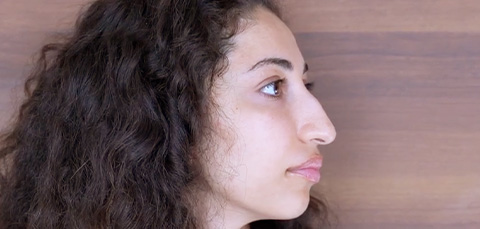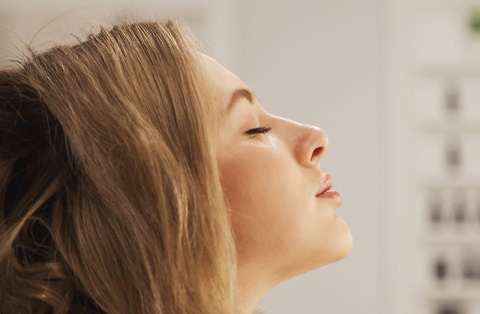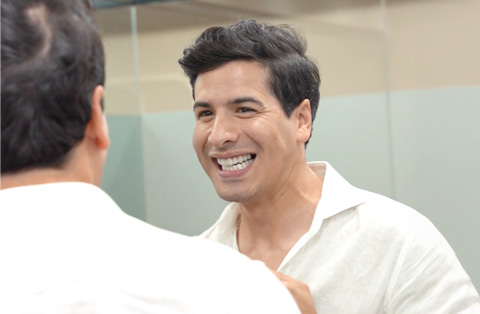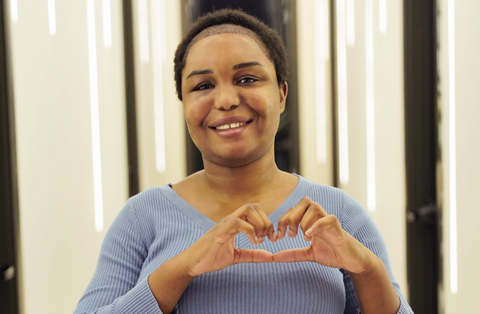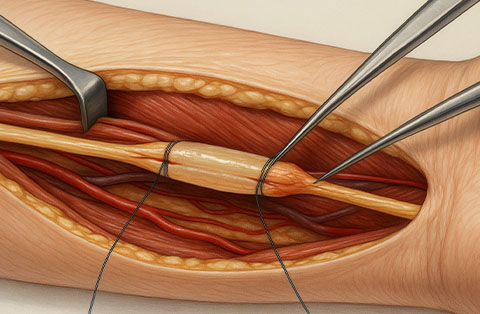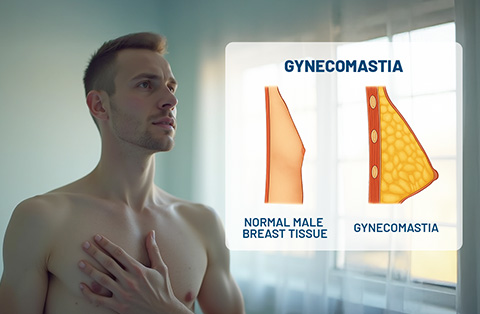A Comprehensive Guide to Rhinoplasty Recovery Time
As an experienced medical professional specializing in facial aesthetic and reconstructive procedures, I have worked with numerous patients seeking to reshape and redefine their nose through rhinoplasty. In this comprehensive guide, we will delve into what you can expect during the recovery time from rhinoplasty and how to best prepare for the healing process.
How Long Does a Nose Job Take To Heal?
The healing process following a rhinoplasty is highly individual and depends on several factors, including the specific surgical approach (open vs closed rhinoplasty), the extent of changes made, and the patient’s overall health. Generally, the majority of the healing occurs within the first few weeks after the procedure, but subtle changes and final results might take up to a year or more to fully manifest.
How Long Does Bruising Last?
Bruising varies from patient to patient. Most patients experience the most substantial bruising and swelling during the first 48 hours after surgery. Generally, bruising starts to fade within a week to ten days and is typically gone by two weeks.
Rhinoplasty Recovery Timeline
Understanding the recovery timeline after rhinoplasty can help manage expectations and ensure optimal healing.
24 Hours Post-Op:
You may feel a bit groggy from the anesthesia. It’s crucial to rest and keep your head elevated to reduce swelling.
48 Hours Post-Op:
The swelling and bruising will peak. Continue to rest, use cold compresses, and keep your head elevated.
1 Week:
Swelling and bruising will start to subside. Most patients feel comfortable returning to work or school after the removal of the external nasal splint around this time.
2 Weeks:
Most of the noticeable swelling and bruising will be gone. Light exercise like walking can be resumed.
3-4 Weeks:
You can return to a more regular exercise routine. However, contact sports should be avoided for at least 6-8 weeks.
6 Weeks:
By now, about 70-80% of the swelling has resolved. The nose will begin to appear more refined, and breathing should be improved if the procedure involved correction of internal structures.
3-6 Months:
Continued refinement and resolution of swelling. The true shape of your nose will be more evident.
1 Year:
Your nose should now be completely healed with the final shape fully settled.
Is it Possible to Speed Up My Rhinoplasty Recovery?
While you can’t rush the natural healing process, following some essential guidelines can help ensure your recovery goes smoothly and may even help your body heal faster.
Listen To Your Doctor:
Following your rhinoplasty procedure, your doctor will provide you with a detailed set of post-operative instructions. These will cover essential areas such as wound care, medication usage, signs of complications, follow-up appointments, and lifestyle modifications.
These instructions are tailored to your specific surgical procedure and personal health status. Compliance with these guidelines is crucial to facilitate smooth healing, minimize the risk of complications, and achieve the best possible outcome.
Listen To Your Body:
In the days and weeks following your surgery, your body will be using a lot of energy to heal itself. You might feel more tired than usual, and that’s completely normal. It’s essential to heed these signals and allow your body to rest as much as it needs.
Overexertion can potentially delay the healing process. If you feel unwell or if something doesn’t seem right, contact your doctor right away.
Keep Your Head Elevated:
Keeping your head elevated above the level of your heart, especially during the first few days post-surgery, can significantly reduce swelling. Using a few extra pillows while sleeping or reclining can help with this. An elevated position helps to decrease blood flow to the area, thereby reducing inflammation and discomfort.
Use Cold Compresses:
Applying cold compresses to the areas around your nose can offer substantial relief during the initial post-operative days. Cold compresses work by constricting the blood vessels, which helps to minimize swelling and bruising.
Be careful not to apply ice or cold packs directly to the nose or surgical area, as this could potentially damage the skin and underlying tissues.
Get Rest:
Sleep is a powerful healing tool. It’s when the body does a lot of its repair work. Ensure you’re getting adequate restorative sleep by maintaining a comfortable and quiet sleep environment. Try to keep a regular sleep schedule and avoid caffeine and electronic screens before bedtime.
Healthy Diet:
A well-balanced diet rich in proteins, vitamins, and minerals can provide your body with the necessary nutrients to heal. Foods high in Vitamin A (like sweet potatoes and carrots), Vitamin C (like citrus fruits and bell peppers), and protein (like lean meats, tofu, and legumes) can support tissue regeneration and wound healing.
Remember to stay well-hydrated by drinking plenty of fluids.
Stay Cool:
Heat can cause blood vessels to expand, leading to increased swelling. Therefore, it’s advisable to avoid hot showers or baths, saunas, and other sources of heat exposure during the initial healing phase. Opt for warm or lukewarm showers and avoid directly spraying water onto your face.
Don’t Blow Your Nose:
Blowing your nose can put undue pressure on your healing nasal tissues and possibly lead to complications such as bleeding or disruption of the surgical site. If you need to sneeze, try to do so with your mouth open to minimize pressure on your nose.
No Strenuous Exercise:
While gentle walks can be beneficial in promoting circulation, avoid strenuous activities, including heavy lifting and high-impact exercises, for at least 3-4 weeks post-surgery. Vigorous exercise can increase your heart rate and blood pressure, leading to increased swelling and risk of bleeding.
Clean The Outside Of Your Nose:
Maintaining hygiene is essential to prevent infection. Clean the outside of your nose gently with a mild soap and warm water, taking care not to disturb any sutures or tapes.
Don’t Wear Glasses:
Wearing glasses post-surgery can place pressure on the bridge of your nose, potentially affecting the final result. It’s advisable to use contact lenses instead during the recovery phase. If glasses are necessary, special arrangements can be made, such as taping the glasses to your forehead, to avoid pressure on the nose.
Stay Out Of The Sun:
Prolonged sun exposure can lead to skin discoloration and increased swelling. Try to stay out of direct sunlight as much as possible during the healing process, and always use a broad-spectrum sunscreen of at least SPF 30 when you need to be outdoors.
Don’t Smoke:
Smoking constricts the blood vessels, reducing the amount of oxygen and nutrients that reach your skin and other tissues, which can delay the healing process and increase the risk of complications. It’s advisable to quit smoking at least two weeks before and after surgery.
Be Patient:
While it’s natural to be eager to see your final results, healing takes time. Each body heals at its own pace, and it’s important to remember that the final outcome of your rhinoplasty may not be visible for several months or even a year. Patience and a positive mindset are key to a satisfactory rhinoplasty recovery.
When Can I Take My Nose Splint Off?
Your doctor will typically remove your nose splint around 7-10 days post-surgery. It’s crucial not to attempt to remove it yourself to avoid any damage or disruption to the healing process.
Which Activities Should I Restrict During My Nose Job Recovery?
It’s essential to avoid strenuous activities, heavy lifting, bending over, and any contact sports for at least 6-8 weeks after surgery. Also, avoid blowing your nose, sun exposure, wearing glasses, and any activity that could put pressure on or risk injury to your nose.
Does Rhinoplasty Hurt?
While discomfort is common in the first few days after surgery, severe pain is rare. Any discomfort can typically be managed with over-the-counter or prescribed pain relievers.
Signs Of Infection After Rhinoplasty
Signs of infection can include increased pain, redness or warmth around the nose, fever, or pus-like drainage. If you notice any of these symptoms, contact your doctor immediately.
FAQ
When can I work out after rhinoplasty?
Light exercise like walking can be resumed after 2 weeks, but strenuous activities should be avoided for at least 6 weeks.
Is There Anything I Can Purchase To Help Heal Post Rhinoplasty?
Over-the-counter Arnica and Bromelain may help reduce swelling and bruising. Discuss these with your doctor before starting any new supplements.
Can I Sleep On My Side After Rhinoplasty?
It’s best to sleep on your back with your head elevated for at least two weeks to avoid pressure on your nose.
When Can I Kiss My Partner Or Have Sex After Getting A Nose Job?
You should avoid any activity that could potentially bump or put pressure on your nose for at least 2 weeks.
What Are The Biggest Precautions After Rhinoplasty?
Avoid sun exposure, strenuous activities, blowing your nose, smoking, and any activity that could injure your nose.
Will I Have Scars After Rhinoplasty?
With a closed rhinoplasty, all incisions are inside the nose, so there are no visible scars. In an open rhinoplasty, the scar is usually very small and fades over time.
Is It Ok To Drink After Rhinoplasty?
Alcohol can thin the blood and increase the risk of bleeding. It’s best to avoid alcohol for at least two weeks before and after surgery.
Will Your Nose Grow After Rhinoplasty?
No, your nose will not continue to grow after rhinoplasty. However, aging can still slightly change the appearance of your nose over time.
Can I Scratch My Nose After Rhinoplasty?
It’s best to avoid touching your nose as much as possible for the first few weeks after surgery to ensure proper healing.
Why Can’t I Bend Over After Rhinoplasty?
Bending over can increase blood flow to the nose, potentially leading to increased swelling and bleeding.
Does A Nose Job Affect Your Breathing?
Rhinoplasty can improve breathing if structural issues like a deviated septum are addressed during the procedure.
Can I Shower After Rhinoplasty?
You can shower 48 hours after surgery but avoid letting the water hit your face directly.
Is Rhinoplasty Recovery Painful?
While some discomfort and congestion are normal for the first few days, severe pain is unusual. Any discomfort can be managed with pain medication.
How Can I Prevent Dry Nose After Rhinoplasty?
Keep your nasal passages moist with saline spray and use a humidifier at night.
Why Do I Have Acne After My Rhinoplasty?
This could be due to skin irritation from the surgical tape or splint. Proper skin cleansing and using non-comedogenic products can help manage this issue. Always consult with your surgeon if acne persists.
